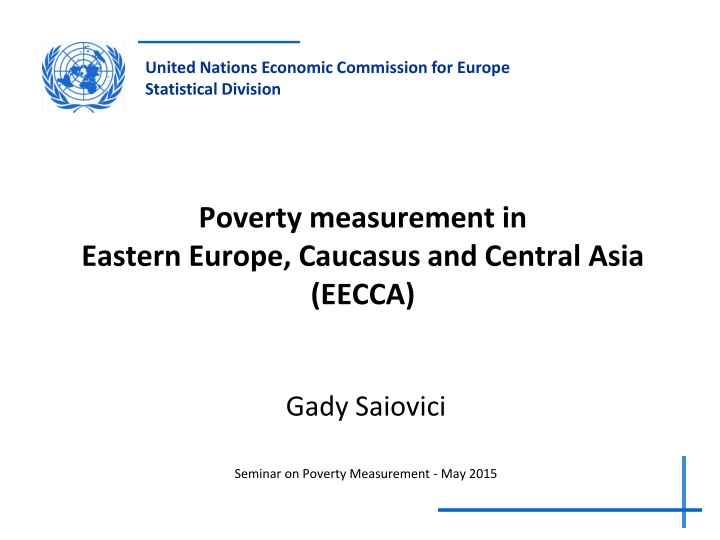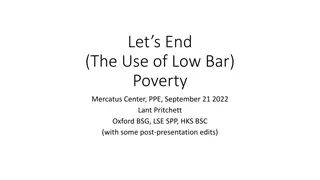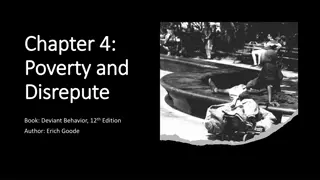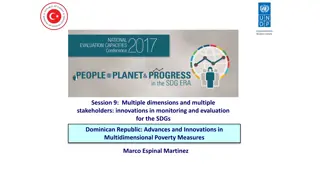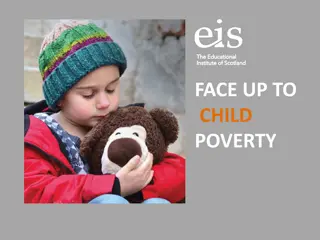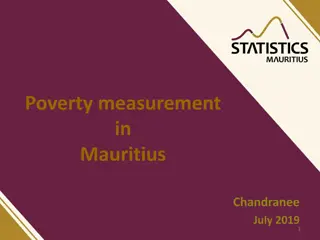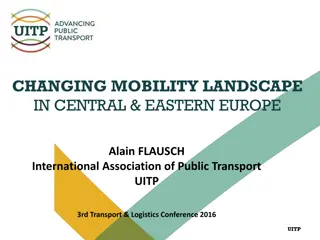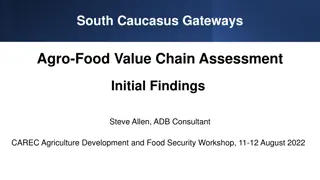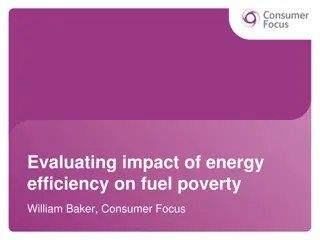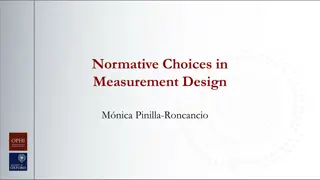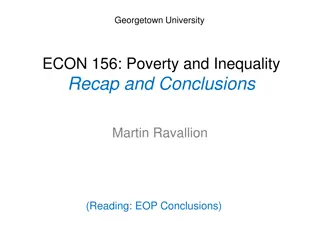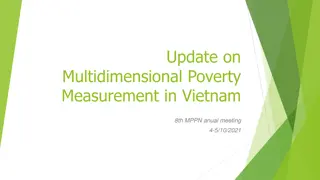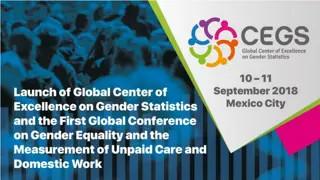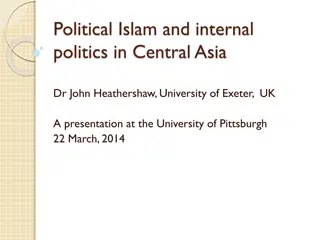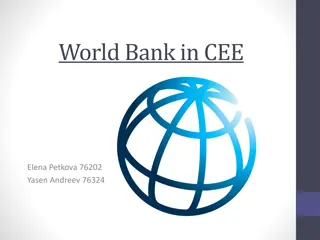Poverty Measurement in Eastern Europe, Caucasus, and Central Asia
Statistical insights into poverty measurement practices in Eastern Europe, Caucasus, and Central Asia as presented by the United Nations Economic Commission for Europe. The presentation covers various dimensions of poverty, including absolute and relative poverty, demographic breakdowns, and the use of equivalence scales. It also discusses the possibility of measuring persistent poverty in several countries.
Uploaded on Mar 04, 2025 | 2 Views
Download Presentation

Please find below an Image/Link to download the presentation.
The content on the website is provided AS IS for your information and personal use only. It may not be sold, licensed, or shared on other websites without obtaining consent from the author.If you encounter any issues during the download, it is possible that the publisher has removed the file from their server.
You are allowed to download the files provided on this website for personal or commercial use, subject to the condition that they are used lawfully. All files are the property of their respective owners.
The content on the website is provided AS IS for your information and personal use only. It may not be sold, licensed, or shared on other websites without obtaining consent from the author.
E N D
Presentation Transcript
United Nations Economic Commission for Europe Statistical Division Poverty measurement in Eastern Europe, Caucasus and Central Asia (EECCA) Gady Saiovici Seminar on Poverty Measurement - May 2015
Introduction Previous measurement sent to NSOs presentation: questionnaire on poverty 11/13 countries from EECCA responded (ARM, AZE, BLR, GEO, KAZ, KGZ, MDA, MNG, RUS, UKR, UZB) Slide 2
Stock-taking Multi- dimensionalSubjective Country Absolute Relative Armenia Azerbaijan Belarus Georgia Kazakhstan Kyrgyzstan Moldova Mongolia Russian Fed. Ukraine Uzbekistan Total X X X X X X X X X X X X X X 10 X X X X X X X X 5 3 4 Slide 3
Absolute Poverty BLR KAZ RUS UKR ARM AZE KGZ MDA MNG UZB Income Consumption Poverty Indicator Slide 4
Absolute Poverty MDA RUS UKR UZB ARM AZE BLR KAZ KGZ MNG Possibility of measuring persistent poverty Yes No Slide 5
Absolute Poverty ARM KAZ MDA UKR AZE BLR KGZ MNG RUS UZB Yes No Use of equivalence scale Slide 6
Absolute Poverty In 9 out of 10 cases, demographic and geographic breakdowns are available Peridiocity is usually annual (BLR, KAZ and UKR have more frequent data; MNG every two years) Slide 7
Relative Poverty BLR MDA RUS GEO UKR Income Expenditure Poverty Indicator Slide 8
Relative Poverty MDA UKR BLR KAZ KGZ Yes No Possibility of measuring persistent poverty Slide 9
Relative Poverty All countries with available data use equivalence scales Available breakdowns: BLR: Geographic GEO, MDA, UKR: Geographic and demographic RUS: Demographic Slide 10
Multidimensional poverty Only calculated in Belarus, Moldova and Ukraine Armenia to introduce it using 2013 ILCS data Survey data Belarus: Material deprivation rate Ukraine: Deprivation poverty and Poverty by relative monetary criteria (<75% median expenditure) + 4 deprivations Administrative data Moldova: Small Area Deprivation Index Regional index using multiple deprivations in rural regions Slide 11
Subjective poverty Armenia, Kazakhstan, Moldova and Ukraine measure it ARM: subjective opinion (scale from 1=poor to 6=rich) KAZ: subjective assessment of living standards (self- attribution to a social group) MDA: linear regression to establish a poverty line based on minimum perceived needs of households UKR: households referring to themselves as poor according to their welfare Slide 12
